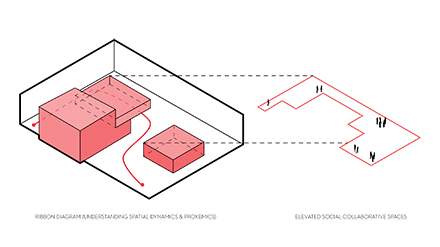Congratulations to Our Newest Associate Principals!
Matt Smith Matt consistently gets kudos from his team for his leadership and mentoring. Matt consistently translates complex projects and schedules into manageable, achievable goals,…

In the past few years, my fervor has grown by leaps and bounds as the old industrial model has started evolving through new pedagogies and curriculum. These changes are based on approaches inspired in part by new technologies, and in part by fundamental shifts in how applied learning can truly produce better results. Some of the factors expounding those shifts in education were highlighted in a recent EdSpaces conference I attended. I share these highlights here to help kickstart a dialogue I hope we can continue.
As most of us know, previous generations were primarily focused on the 3 R’s: Reading, Writing, and Arithmetic. The focus has now shifted to the 4 or 5 C’s, depending on which camp you are in: Communication, Collaboration, Creativity, Critical Thinking (and Compassion). The fundamental shift is from mastering content to the ability to work with content to create meaningful results.
Now, Project-Based Learning (PBL) – a teaching method where students understand the material by engaging in research, investigation and solving real-world problems for an extended period of time – is pushing the learner to internalize the content rather than simply memorize it, which ultimately produces results. PBL also transcends the typical subject-based curriculum toward an integrated one with an interdisciplinary approach. Students are challenged to engage in design thinking, requiring them to learn and practice empathy to drive toward deeper solutions through the stages of definition, ideation, iteration, implementation and very importantly, feedback. The richness of the investigation and learning inspires in a way traditional rote memorization and digestion of content never can.

Learning spaces are adapting to these new methodologies in myriad ways. Desks are no longer arranged in rows and columns, but grouped in clusters to foster the 5 C’s. Rooms are changing from dedicated content spaces to small, medium and large exploration environments with mobile tools that travel from space to space where needed. A connection to the physical world is now recognized as essential, as is access to natural light to stimulate our circadian cycles. Outdoor environments to further students’ understanding of what’s learned inside the classroom is also seen as invaluable to relieve the continuity of indoor environments with strictly controlled elements such as temperature and light levels. All of this further awakens bodies from the under stimulation resulting from the sameness of consistency.
These agile learning environments are empowering students to have voice and choice in their environments and how they approach learning. This empowerment leads to motivation over listlessness. When the students have a say in what tool they use, how they utilize it, with whom and even where they learn, the environment becomes a resource that propels them forward rather than an obstacle to overcome.
The implications for architecture are only starting to be explored around the globe as educators and architects work together to explore ways to make learning better. I have never been more excited for the future of education and to work on these environments. While the design process just got harder and the outcomes are not as easy to predict, the real benefits and results that society will see as a whole make the effort easy to endure. What are your thoughts? Shoot me an email. Let’s push this forward together.